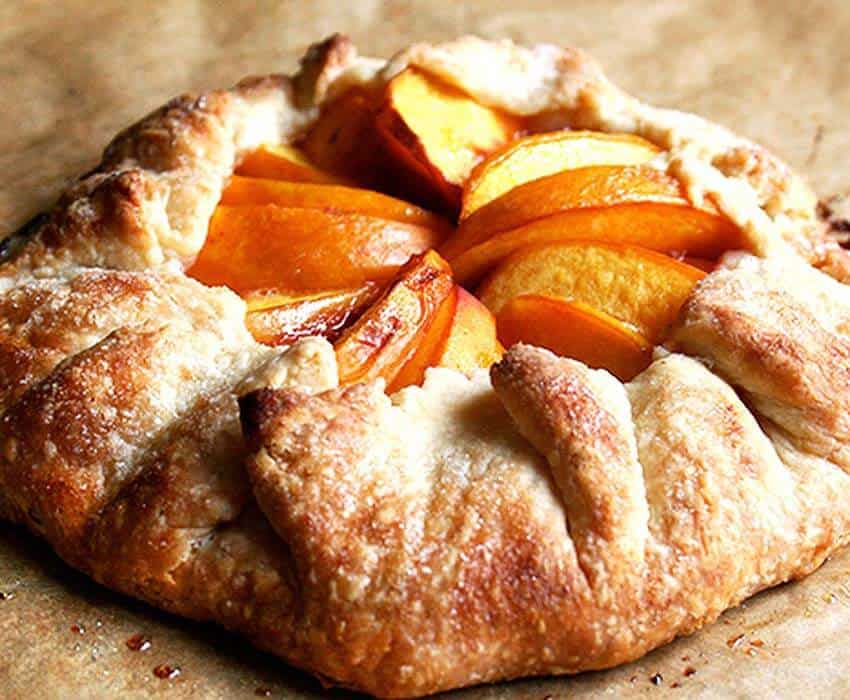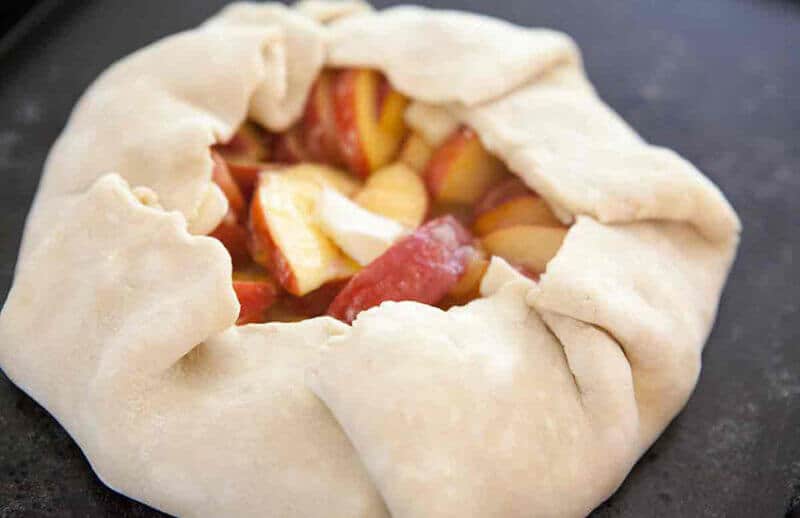Yesterday I breezed into the grocery store intent on getting in and out quickly. I only needed a few things to try a recipe for what I thought was going to be this week’s column.
I headed for the produce section just to see what was available (you know how that is, right?) and suddenly my olfactory sensors registered something very, very wonderful. Something that shouldn’t have been there, that never is. The deliciously sweet aroma took me back to summer in New York and Pennsylvania, California and Oregon, when stone fruits fill farmers’ markets and grocery stores, and one somehow grows tired of eating them.
I let my nose lead me to the left, and there they were: peaches. Piles of them. An employee was dumping boxes and boxes of the fuzzy round fruits unceremoniously onto a display table. The smell was mouthwatering.
I asked where they were from, and he pointed out the two varieties, a more yellow, smoother and bigger peach from Chihuahua and a classic fuzzy, reddish-orange peach from California.
I was skeptical, remembering the countless times I’d fallen prey to the sweet smell of plums, peaches or nectarines in Mexico and finding them mealy, dry and flavorless. Dare I risk it once again?

I did. And boy, am I glad!
Late August and early September are the height of peach season in Northern Mexico and California, which produces the most peaches of any American state. (Yes, more than Georgia!) Here in Mazatlán, the Mexican peaches were from Sonora, but they’re grown in Chihuahua, Zacatecas, Puebla and Veracruz too.
I’d actually wondered why peaches were included in the traditional chiles en nogada recipes, not realizing that the harvest came in at the end of summer. If you’re living in Mexico, now is the time to look for and buy them! Wanting the peaches of my past, I bought the California ones.
Native to China, peaches are in the rose family — hence the strong, sweet aroma. Cherries, apricots, plums and almonds, too, are all in the genus Prunus. Nectarines are actually fuzz-less, smooth-skinned peaches but are marketed separately as a completely different fruit. Peaches came to Mexico with the Spaniards, who brought pits and planted them.
After two days of ripening on the counter, my peaches were slightly soft to the touch and made my kitchen smell like summer memories. They were sweet and juicy, tender and delicious, and I went back to buy more. Yes, I’m grateful to have a year-round abundance of mangos, coconuts, papayas and pineapple in my Mexican life — but there’s just something really wonderful about a perfectly delicious peach.
Usually, I include an assortment of recipes for both sweet and savory dishes. This time, I want to encourage and enable you to enjoy these delicious fruits as the desserts they deserve to be.
Peach Galette
Don’t be intimidated — galette is just a fancy name for a free-form pie. Use the same method with other fruits, like apples, berries or mangos. For step-by-step photos of the process, go here.
- Pie dough for 1-crust pie
- 4 large ripe peaches
- ¼ cup tapioca or corn starch
- ½ cup sugar
- Pinch kosher salt
- 1 large egg
- 1 large egg yolk
- 1 Tbsp. heavy cream or milk
- ⅛ tsp. salt
Roll dough into a 14-inch round. Transfer to parchment-lined baking sheet, cover with plastic and refrigerate to chill dough, at least 2 hours or up to 24.
Wash peaches. (No need to peel). Cut into ½-inch slices. (Thicker slices cook slower without turning mushy.) In a medium bowl, measure out 3 cups of fruit. (Don’t use more.) Sprinkle starch over peaches; toss until well combined.
Preheat oven to 400 F. Adjust oven rack to lower-middle position. Arrange peaches in a ring in the center of chilled dough, tiling slices like dominoes and leaving about a 2-inch border of dough all around. Sprinkle sugar on top of peaches; finish with a pinch of salt.

With a sharp knife, cut a series of slits into the border of dough, each slit running from fruit to edge of the dough, spacing them about 5 inches apart.
Fold each segment of dough over peaches, tugging gently so the edge of each segment tightly overlaps the one that came before. Alternately, fold border of dough up over peaches, crimping like a big pie, leaving the fruit exposed in the center.
Whisk egg, egg yolk, cream or milk and salt in a small bowl. Brush over dough in a thin, even layer (including under each flap) to give crust a golden sheen and help bind pieces together.
Bake until pie is juicy, golden brown around the edges and bubbling in the center, 25–35 minutes.
Let cool 5 minutes, then slice into wedges and serve warm, garnished with whipped cream or vanilla ice cream.
Peach Upside-Down Cake
- ¼ pound unsalted butter, softened, plus more for greasing the pan
- 3 large, ripe peaches
- 1¼ cups sugar
- 1 cup flour
- ¾ tsp. baking powder
- ¼ tsp. ground nutmeg
- 3 eggs
Heat oven to 350 F. Grease a 9-inch cake pan. Line bottom of pan with parchment paper and butter that too. Pit peaches; cut into slices ½-inch thick. Arrange slices in a pattern on the bottom of the pan.
Combine ½ cup of sugar with ¼ cup of water in a saucepan. Cook over medium-high heat until mixture turns amber, 10–12 minutes.
Remove from heat immediately and pour evenly over the peaches.
In a medium bowl, sift flour, baking powder and nutmeg. Set aside.
In another bowl, beat together butter and remaining ¾ cup sugar. Beat in eggs one at a time, then stir in flour mixture. Spread batter evenly over the peaches and caramel.

Bake 30–35 minutes, until top is golden brown and cake is set. Remove from oven. Run a knife around the sides, then place a platter or plate on top and invert the cake onto the platter. Serve warm or cooled to room temperature.
Janet Blaser is the author of the best-selling book, Why We Left: An Anthology of American Women Expats, featured on CNBC and MarketWatch. She has lived in Mexico since 2006. You can find her on Instagram at @thejanetblaser.
